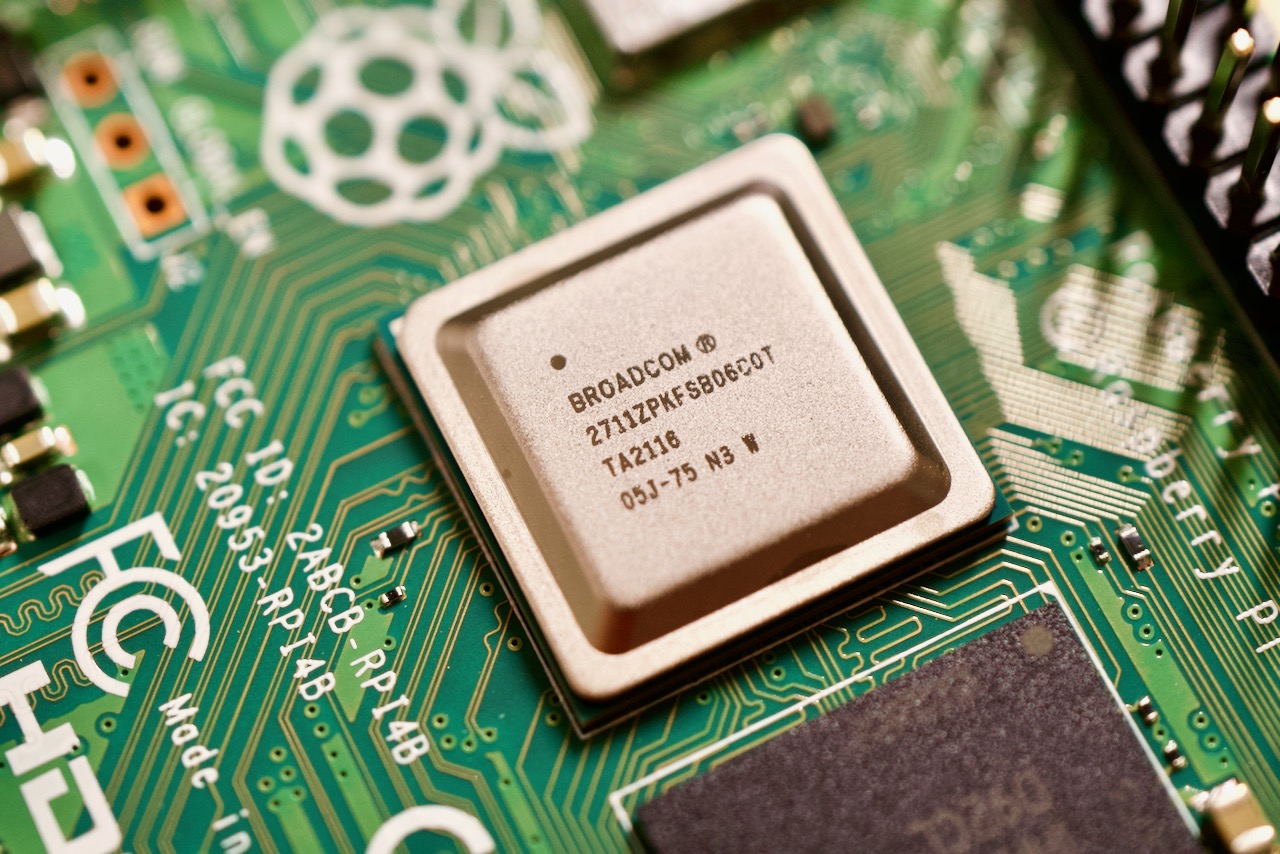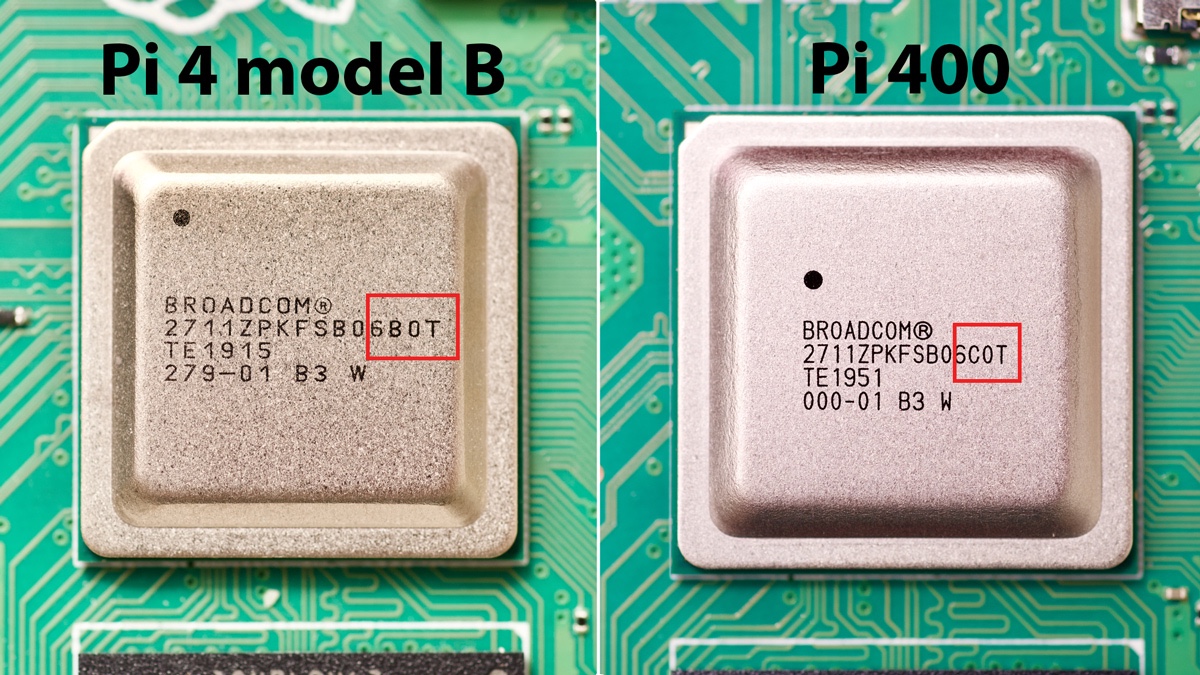

Raspberry Pi 4 model Bs arriving with newer 'C0' stepping
source link: https://www.jeffgeerling.com/blog/2021/raspberry-pi-4-model-bs-arriving-newer-c0-stepping
Go to the source link to view the article. You can view the picture content, updated content and better typesetting reading experience. If the link is broken, please click the button below to view the snapshot at that time.

Raspberry Pi 4 model Bs arriving with newer 'C0' stepping
September 27, 2021
Owing to a mishap with the Pi 4 model B I use for testing—more on how Red Shirt Jeff ruined that board later this week—I had to go buy a new Pi 4 last week.
The local Micro Center only had the 8 GB model in stock, so I went a little over budget and bought it. When I arrived home, I checked the board, and noticed a bit of a difference on the Broadcom SoC:

Can you spot it? The model number of the BCM2711 chip on this board is 2711ZPKFSB06C0T, which is the same as the chip found on the Pi 400.
This is a newer stepping of the original Pi 4 model B chip, which has the model number 2711ZPKFSB06B0T. The difference is the third-to-last character, the C versus the B.
Apparently 8 GB models may have had that version of the chip since their introduction in 2020, if this GitHub comment by pelwell is to be believed. But according to a few others, even the 2 GB model produced in the past year have this newer C0 stepping:
I found the invoice from April 13th, so that's the earliest date we know of this new SoC in a Pi 4B for now pic.twitter.com/zLl5QfXRgm
— Lucas (@lululombard) September 27, 2021
I covered the B0-vs-C0 stepping in an earlier post, my Raspberry Pi 400 Teardown, but I've learned a few new things that I'll mention here.
Identifying the stepping on your Pi 4
If you want to see if you have the newer revision to the BCM2711 SoC on your Pi, there are two ways.
The easiest, if you can take a peek at the SoC on top of the board, is to look at its model number. If it reads 'B0T' at the end, it's the older model. If it's 'C0T', its the newer model (like the one in the Pi 400):

If you can't see the top of the SoC (e.g. if you have it installed in a case), you can determine the revision in software.
From a comment by pelwell on GitHub, you run the command od -An -tx1 /proc/device-tree/emmc2bus/dma-ranges, and it will give you different output depending on the stepping:
# B0
pi@raspberrypi:~$ od -An -tx1 /proc/device-tree/emmc2bus/dma-ranges
00 00 00 00 c0 00 00 00 00 00 00 00 00 00 00 00
40 00 00 00
# C0
pi@raspberrypi:~$ od -An -tx1 /proc/device-tree/emmc2bus/dma-ranges
00 00 00 00 00 00 00 00 00 00 00 00 00 00 00 00
fc 00 00 00
What's new in the C0 stepping?
So the big question: what am I missing if I have the older B0 stepping? Fortunately, not much. A new stepping doesn't add new features like a faster processor, a better GPU, or more encoders. It represents an updated 'process', usually meaning some bugs in the silicon were fixed.
In the case of the BCM2711, it looks like the two main fixes are related to RAM addressing:
- The EMMC2 bus can only directly address the first 1GB.
- The PCIe interface can only directly address the first 3GB.
And this is probably why the chip first showed up 8 GB Pi 4 models, since it wouldn't affect the lower end models as much. And from other forum posts, it looks like there are also 'power gating improvements'.
I have seen more stable overclocks on CM4 and Pi 400 boards, and that's probably because the newer C0 chips on them are able to handle higher clock speeds with very slightly improved thermals. Though I don't know if anyone will confirm that outside of anecdotal test data. And I don't have the budget to buy hundreds of boards to confirm whether that's just luck or an actual difference in older Pi 4s.
One thing to watch out for is any software that expects the B0 stepping as a feature flag—like u-boot did until earlier this year—having weird issues on newer Pi 4 model B boards. Software that relies on that level of detail is not too common, though, and none of the things I run on my Pis has had an issue.
Recommend
About Joyk
Aggregate valuable and interesting links.
Joyk means Joy of geeK